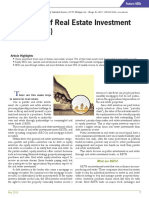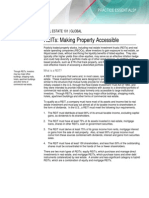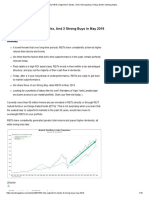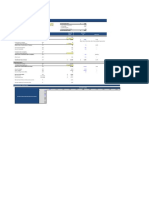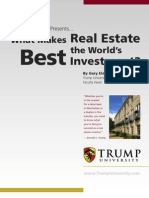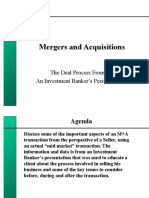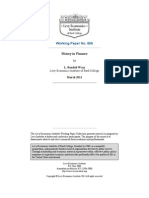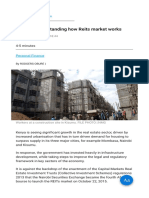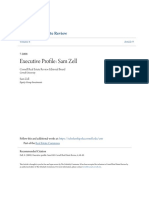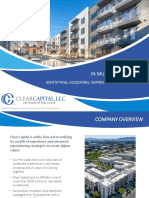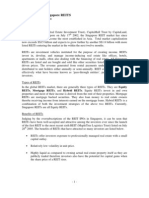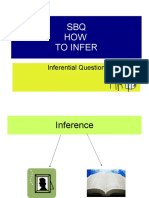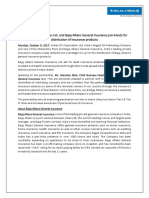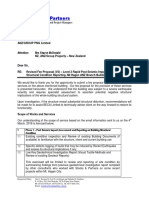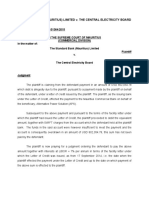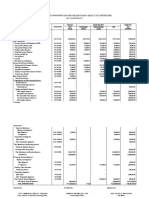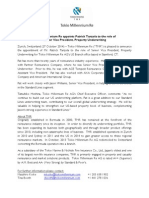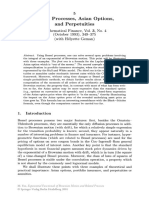Understanding REITs
WHO WE ARE
A collaboration between
MoneySENSE, the national financial
education programme, and
Singapore Polytechnic.
1
� Foundation
Making Sense of Your money
Financial Planning Begins Now
OUR OTHER MODULES Understanding Loans and Credit
Is The Deal Too Good To Be True?
Life Stage Understanding Life Insurance
Understanding Basic Health Insurance
Building Your Nest Egg
Managing CPF For Your Retirement
Introduction To Personal Investing
Introduction To Estate Planning
Interest Group Buying a Home Within Your Means
Starting A Family
Financial Planning for The Youth
Enrich Your Golden Years
Understanding Bonds
Fundamentals of Share Investing
OVERVIEW:
What is a REIT
Structure of REITs
Risks and Benefits
How to Select a REIT
2
� DISCLAIMER
This workshop aims to help you evaluate
information. It will not involve any advice in
product selection.
Any mention of industry, company or reference to
product is solely for the purpose of illustration and
application of concepts.
You should consult a licensed financial advisor
before making a decision to invest in any products
WHAT IS A REIT
A collective investment scheme that invest
in a portfolio of income generating real
estate assests
3
� REITS AS AN ASSET CLASS
Potential
Returns
High
Futures/Options Derivatives
Stocks & Shares
ILPs/Unit Trusts/REITs/ETFs
Moderate Real Estates/Properties
Bonds Insurance Policies
Deposits
Low Cash
Risk
Low Moderate High Level
SOME TYPES OF REAL ESTATE ASSETS
Hotels, serviced-apartments
Warehouse, industrial buildings
Commercial buildings, shopping malls
4
�HOW DOES REIT GENERATE INCOME?
KEY FEATURES
1. Distribution of __________% of income
2. Development limit up to _____________% of
asset
3. Limits on gearing ____________%
EARNINGS GROWTH STRATEGY
Acquisition &
Rebalancing
Asset Rental
enhancement increase
5
� STRUCTURE OF REITS
KEY CONSIDERATIONS BEFORE
INVESTING
Your objectives, risk Risks of the Quality of
appetite and selected REIT assets and
investment horizon key personnel
Fees and income Gearing ratio and
distribution policy debt maturity
Tenancy mix and
occupancy ratio Compare with other yield
generating investments
Do not invest in a REIT you do not understand
6
� BENEFITS OF REITS
1. Diversification
2. Affordability
3. Liquidity
4. Tax
5. Transparency and Flexibility
6. Distribution yield
REITS VS PROPERTY STOCKS
REITs Property Stocks
Business Income-generating Property related but need
focus properties not generate income
Custody of Held on trust by trustee Held by the company
assets
Dividend Must pay at least 90% of net Decided by the board
policy income after tax
Leverage 45% of REIT’s deposited None
guidelines property
Investment At least 75% of the REIT’s None
guidelines deposited property should
be income producing. 90%
of income derived from
rentals or interest
7
� REITS VS PROPERTY STOCKS
REITs Property Stocks
Tax Benefit Yes No
Traded through broker Yes Yes
Management fees Yes No
Clearing fees Yes Yes
Brokerage commission Yes Yes
Market
Liquidity Income
RISKS & OTHER
Concentration Interest rates
CONSIDERATIONS
Key personnel Leverage
Geographical Yield
8
� Top down
approach
Compare
yields
How to
select a
REIT
Growth
potential
Gearing
ratio
MARKET CAPITALISATION
AN EXAMPLE
9
� VOLUME - AN EXAMPLE
EARNINGS BEFORE INTEREST, TAX,
DEPRECIATION AND AMORTIZATION
AN EXAMPLE
10
� PRICE/EARNINGS RATIO - AN EXAMPLE
1. When selecting a REIT, we should consider the following
a) The macro environment and the sector
b) The yield from the REIT
c) The experience of the REIT manager
d) All of the above
2. When compared with buying a physical real estate,
buying a REIT
a) Offers diversification with a smaller outlay
b) Tend to give better liquidity
c) Offers tax benefit
d) All of the above
11
�3. Which of the following statement is NOT true
a) A REIT is traded on the stock exchange
b) Investing in a REIT is the same as investing in property
stock
c) The performance of the underlying asset in the REIT
could be cyclical in nature
d) A REIT offers diversification of an investment portfolio
4. Which of the following statement is FALSE
a) REITs, like bonds have maturity dates
b) A REIT generally offers a steady income stream
c) A REIT has to pay out at least 90% of its net income to
investors to enjoy tax benefits
d) A REIT is regulated in terms of its leverage
and new property development
5. A higher yield REIT is NOT always better than one
with lower yield because
a) The price of the REIT may have fallen
b) It may be an indication of inability of the higher yield
REIT to pay its debt
c) The two REITs may be invested in different sectors
and cannot be compared simply based on yield
d) All of the above
12
�USEFUL WEBSITES
The MoneySENSE‐Singapore Polytechnic
Institute for Financial Literacy: www.finlit.sg
(for details on programmes, e‐learning)
MoneySENSE: www.moneysense.gov.sg
Singapore Stock Exchange: www.sgx.com
13

